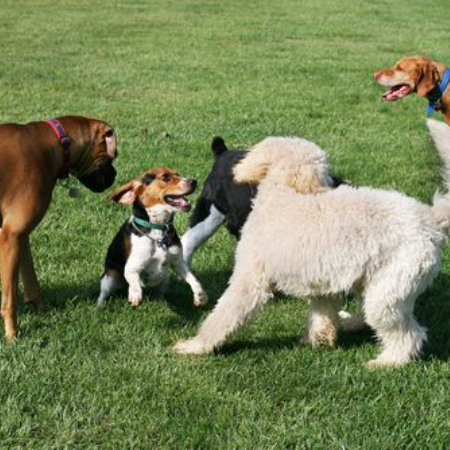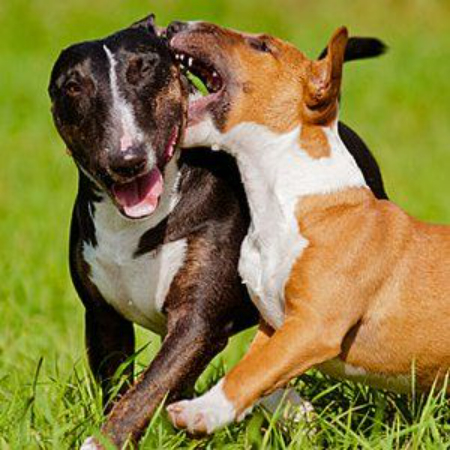The Ultimate Guide to Dog Park Etiquette: Dos and Don’ts for a Pawsitive Experience
Nothing compares to seeing dogs run amok in a park, their tails waving and their tongues lolling with pure happiness. For our animal companions, the dog park is a haven where they can interact with one another, get exercise, and simply be dogs.
Even while these excursions can be a lot of fun, there are unwritten guidelines that dog owners should abide by in order to make sure that everyone has a positive experience. This guide will help you and your dog make the most of your time at the park, regardless of how experienced you are with dog parks.
The Dos: How to Be a Barkworthy Dog Park Visitor
1. Do Know the Rules of the Park

Each dog park has its own rules, which are typically displayed at the entry. These guidelines may cover anything from leash laws to particular operating hours. Read these rules for a moment before letting your dog go. They are in place to ensure the happiness and safety of all. Recall that information is power, and in this instance, it holds the secret to a drama-free visit.
2. Do Keep an Eye on Your Dog
It may be tempting to lose yourself in a conversation with other dog owners or to lose yourself in your phone, but paying attention is essential. Even the most amiable dog occasionally has bad days or gets into fights. Pay attention to the interactions and behavior of your dog. Are they acting fearfully or aggressively, or are they still playing nicely? Being there allows you to intervene before a small problem becomes a big one.
3. Do Clean Up After Your Dog
It should go without saying, but just to be clear, always, always pick up after your dog. It’s unpleasant to walk on a mess, and it’s disrespectful to other park users to leave it behind. Although many parks offer bags, it’s a good idea to have your own on hand in case.
4. Do Pay Attention to Your Dog’s Body Language

Dogs use body language to communicate a lot. Observe closely the way your dog has behaved around other people. While a waving tail is usually a positive indication, your dog may be feeling nervous or scared if it exhibits other signs as well, such as raised hackles, bared teeth, or stiff posture. It may be time to stop for the day, or at least take a break, if you observe these symptoms.
5. Do Respect Other Dogs’ Space
Certain canines are more social than others, just like people. Respect another dog’s space if they appear uneasy or are avoiding contact. Not every dog likes being approached, particularly not by a hyperactive puppy. Instruct your dog to approach other dogs in a composed manner and to go away if they are not interested in playing.
The Don’ts: Avoiding Common Dog Park Faux Paws
1. Don’t Bring an Unvaccinated or Sick Dog
Dog parks, as was previously noted, are hubs for dog socialization, which implies that bacteria can spread swiftly there. Not only does bringing an unvaccinated or sick dog put your pet at risk, but it also puts the other dogs in the park in peril. Missing a few park days is preferable to maybe starting a disease breakout.
2. Don’t Let Your Dog Bully Others

Like any other social context, dog parks can experience bullying behavior. It is your duty to intervene and discipline your dog if it is persistently picking on a smaller or more obedient dog. If you let your dog harass other people, it may result in altercations and make the park unfun for everyone.
3. Don’t Bring Small Children into the Dog Area
It may be tempting to take your kids to the dog park, but it’s usually not a good idea to let young kids play in the off-leash area. Dogs can be erratic, particularly in an energetic setting. A dog may jump or nip in response to a child’s abrupt movements or loud noises, which could result in an unfortunate situation. Keeping children in a separate area or taking them to a park with a dedicated children’s area is safer.
4. Don’t Ignore Your Dog’s Behavior
It’s simple to become engrossed in a discussion or preoccupied with your phone, but neglecting your dog’s behavior might have negative consequences. It’s critical to act quickly if your dog exhibits violent behavior or appears too eager. A timely intervention can save things from getting worse and ensure that all canines are safe at the park.
5. Don’t Overstay Your Welcome

Dogs, no matter how active, have their limits. Keep an eye out for telltale indicators of fatigue in your dog, such as decreased energy, increased panting, or lack of enthusiasm in playing. Staying too long can make you tired or irritable, which can make bad interactions more likely. It’s time to go home when your dog has had enough.
Wrapping It Up, A Woof-Worthy Conclusion
Dog parks are fantastic locations for dogs to interact with people, get exercise, and let off some steam. Like any social setting, they do have their own set of guidelines and standards, though. You can make sure that your trips are stress-free, safe, and enjoyable for you and your pet by adhering to these dos and don’ts.
Keep in mind that polite behavior in dog parks involves more than just abiding by the laws; it also involves showing consideration for other people and dogs. Thus, bear these suggestions in mind the next time you visit a park, and you’ll guarantee a positive experience each and every time.
Cheers to happy tails!
Doglime for more dog-related information.
Tags










